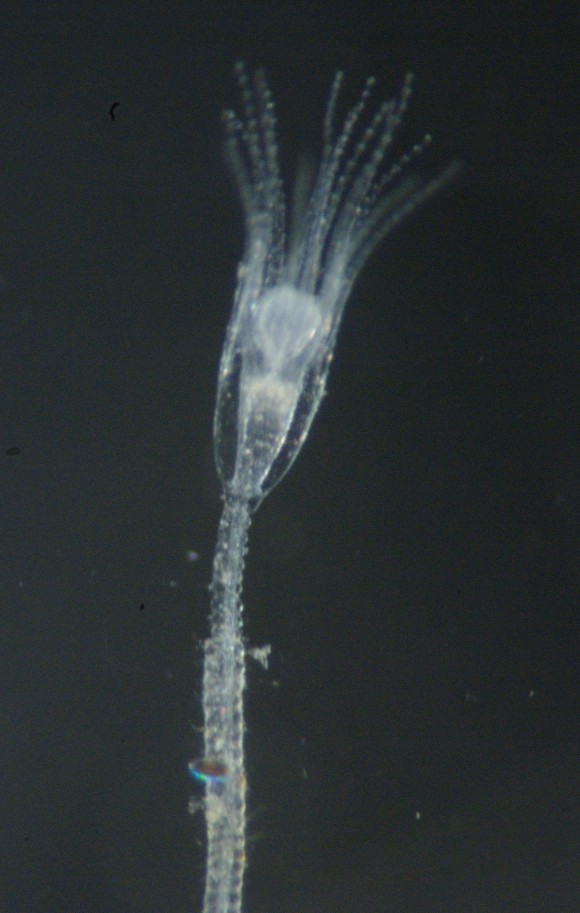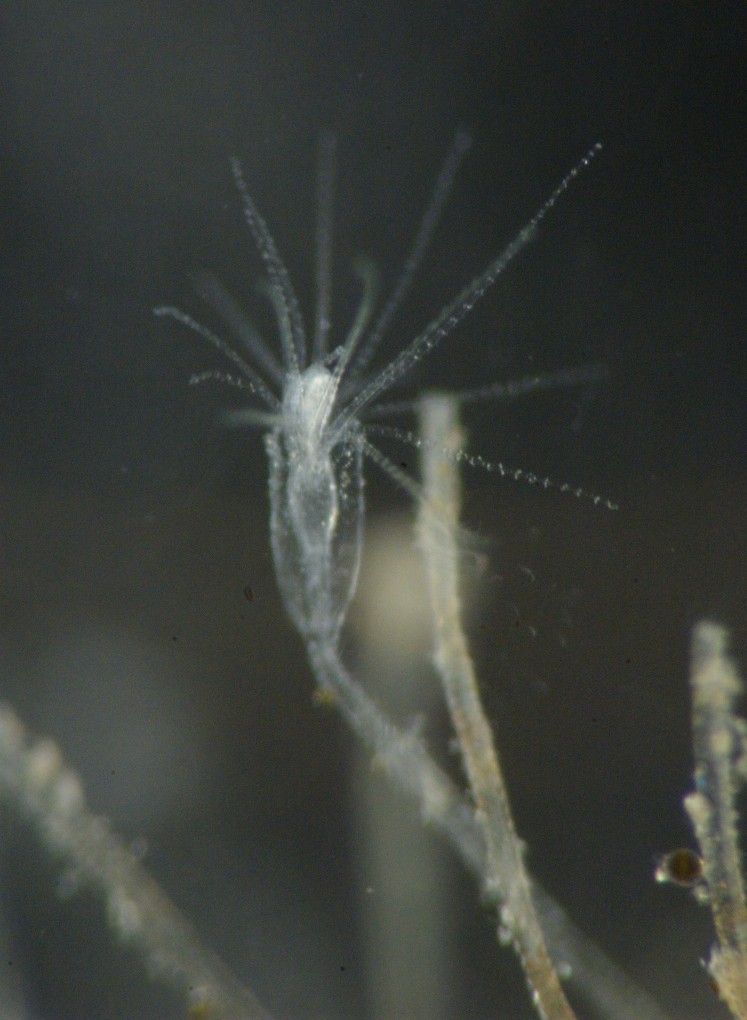Orthopyxis everta (Clark, 1876)Common name(s): |
|
| Synonyms: Eucopella everta |  |
|
Phylum Cnidaria
Subclass Leptotheca (Leptomedusae;
Thecata)
Order Proboscoida
Family Campanulariidae
|
|
| Orthopyxis everta, about 2 mm tall, on a tunicate. Note the annulated pedicel and smooth rim to the hydrotheca. | |
| (Photo by: Dave Cowles, August 2010 ) | |
How to Distinguish from Similar Species: Several similar genera such as Campanularia and Clytia have cusps or undulations on the rim of the hydrotheca. Orthopyxis compressa and O. integra have smooth, non-annulated pedicels
Geographical Range: British Columbia to southern California.
Depth Range: 2-77 m.
Habitat: Sometimes found abundantly on kelp
Biology/Natural History:
The colonies
grow in a stolon.
This hydroid
retains
its gametes. The larvae of the pycnogonid Tanystylum
duospinum live parasitically on this species.
| Return to: | |||
| Main Page | Alphabetic Index | Systematic Index | Glossary |
References:
Dichotomous Keys:Carlton, 2007
Kozloff, 1987, 1996 (as Orthopyxis spp)
General References:
Scientific Articles:
Web sites:
General Notes and Observations: Locations, abundances, unusual behaviors:

Another indivudual on the same tunicate. Note the
diatoms attached
to some stalks.
Authors and Editors of Page:
Dave Cowles (2010): Created original page
CSS coding for page developed by Jonathan Cowles (2007)
Rosario Invertebrates web site provided courtesy of Walla Walla University